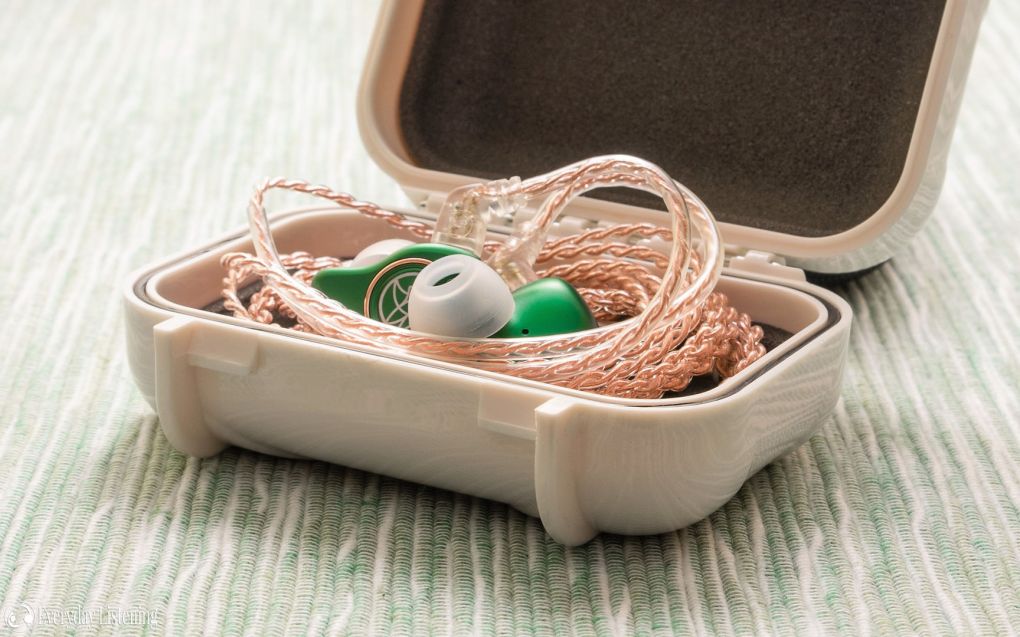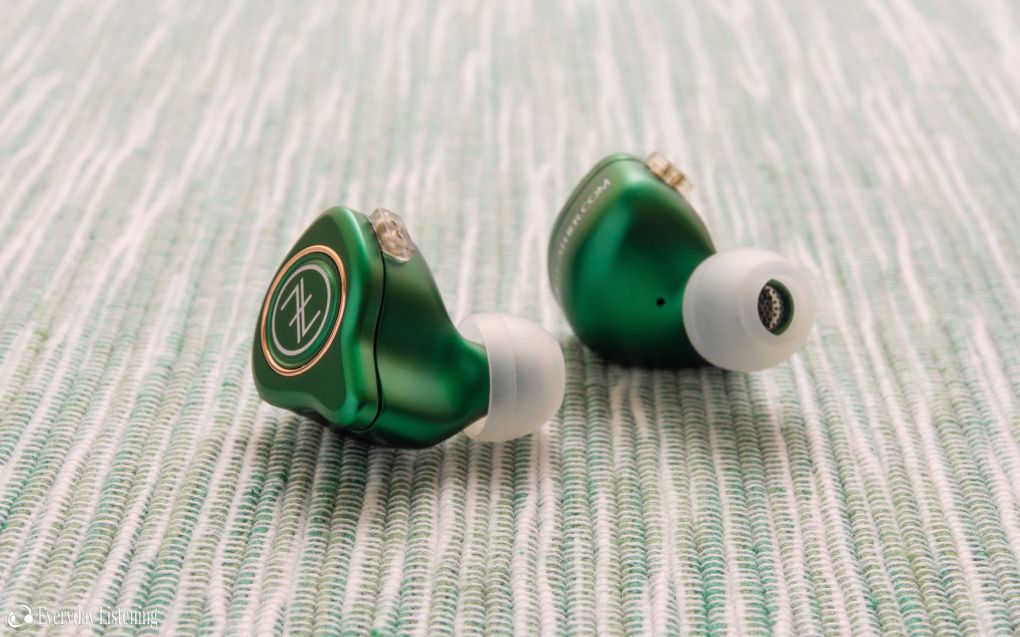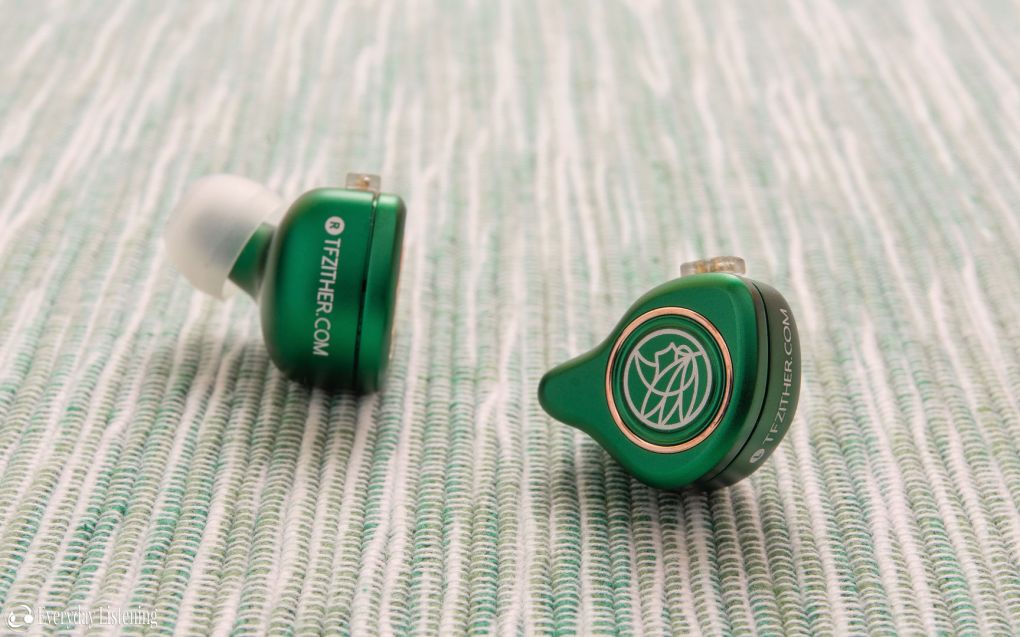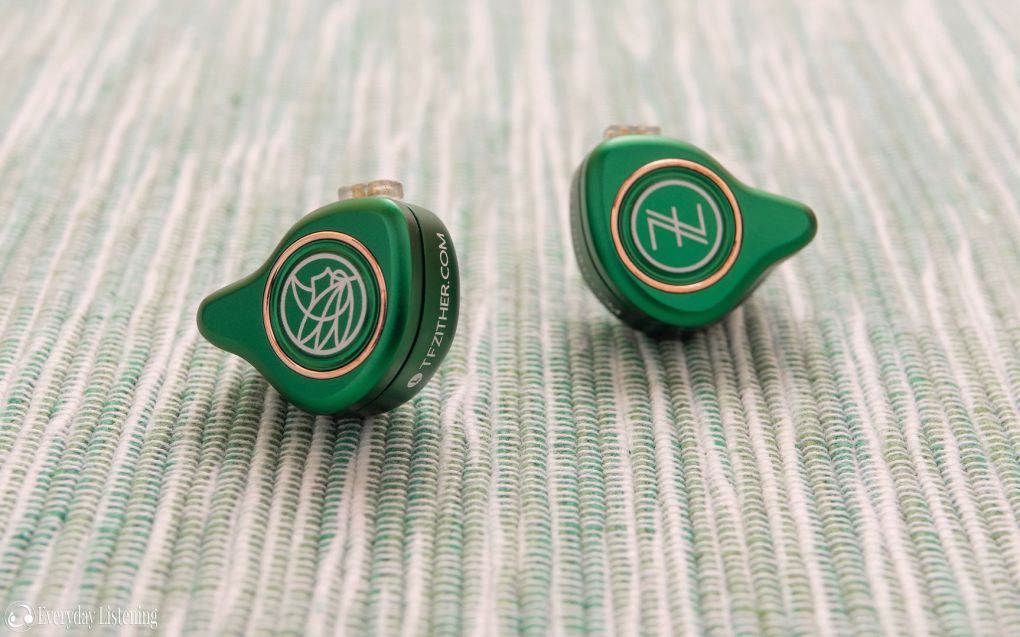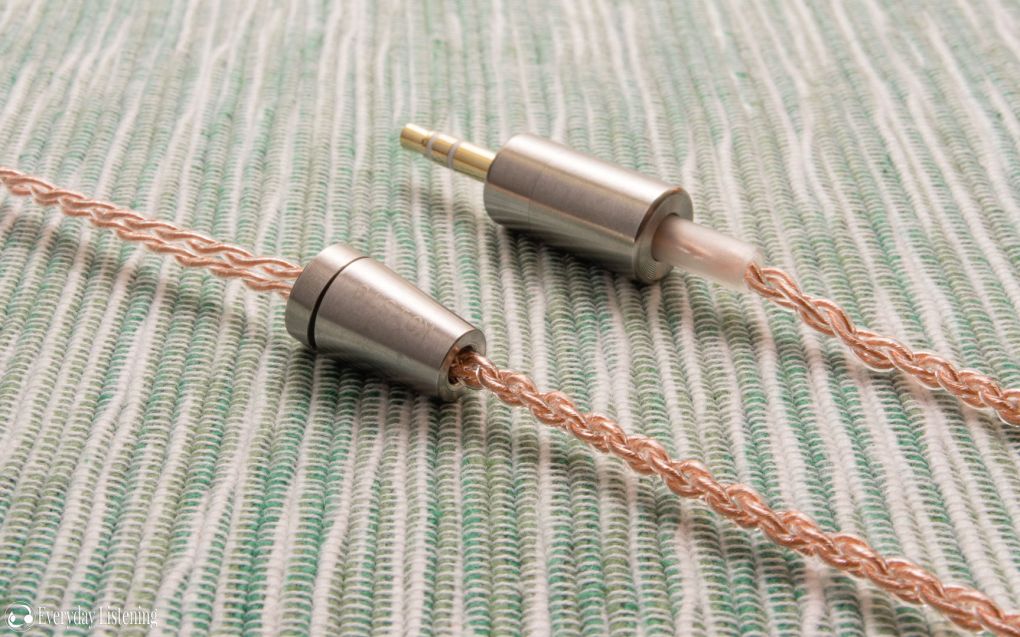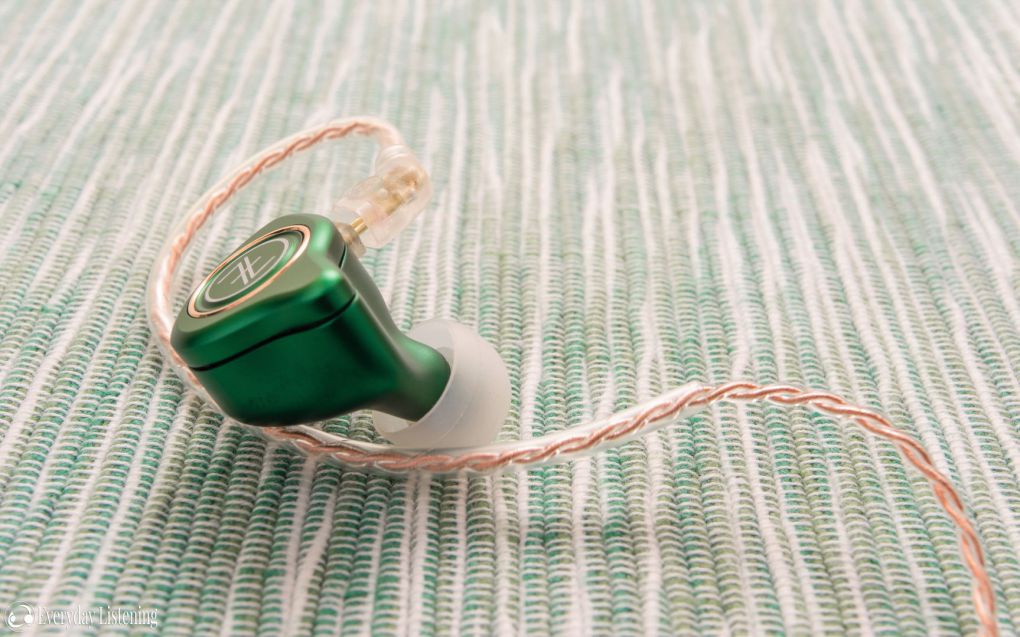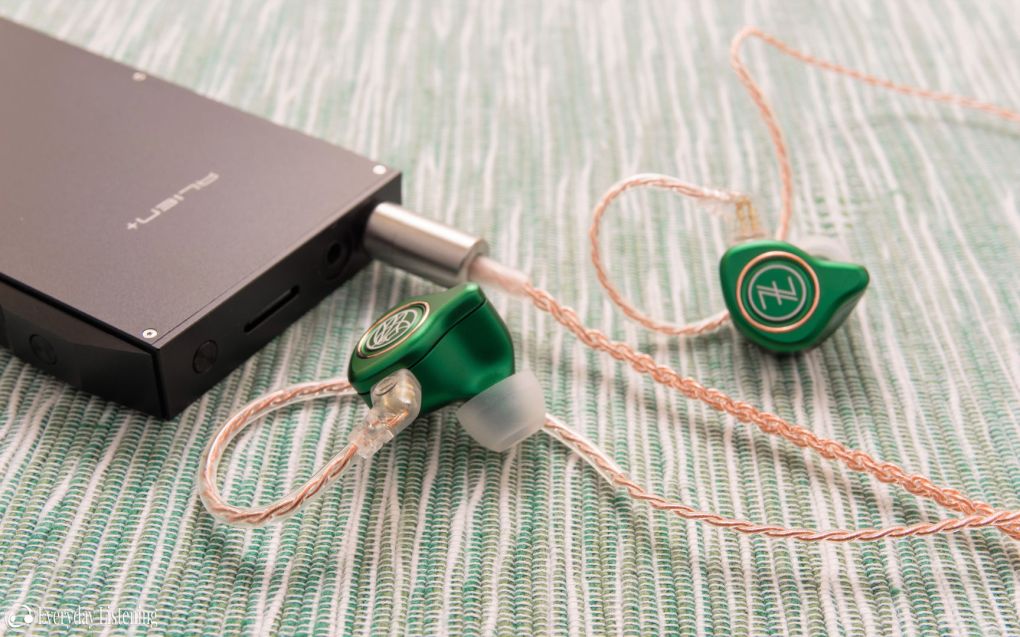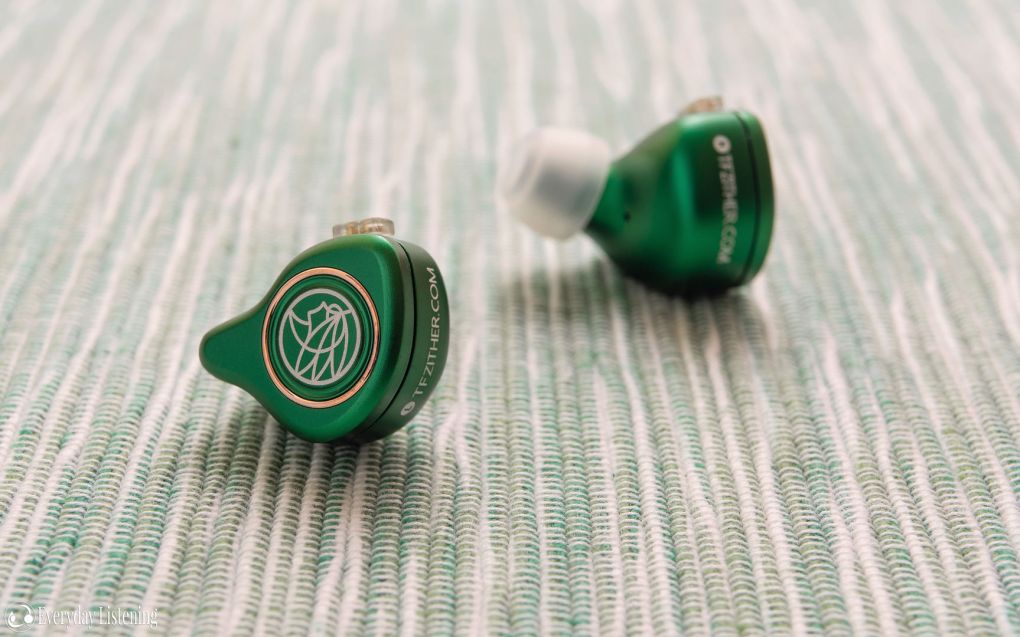INTRODUCTION
Hello again guys, I am Areek Nibras, physician, father of a 1 yr old daughter and music lover from Bangladesh. I enjoy listening to most types of music & my sonic preference usually is warm & mid centric with non-offensive treble (see my gears page). Today I will be reviewing the King pro IEMS from The Fragrant Zither (TFZ). TFZ are a Chinese company who specialize in in ear monitors only, There products range from entry level to high end(750$) in ears. The King pro sits in the middle of that lineup at 169MSRP (penon audio) and is the highest prized iem in the King series. This IEM challenges the sub 200$ genre with a fun V shaped detailed sound for the avg. fun loving audiophile. Local retailer ‘Box Tech’ has introduced the TFZ lineup of iems in my country and this is the pair that I personally liked the most amongst their offerings under 200$.

DISCLAIMER
The TFZ King pro iems have been personally bought by me through the authorized distributor. It was a open box unit but very slightly used considering I got them just after 3-4 days of arrival. I am in no way affiliated with TFZ as well as Box tech. The review I'm posting is just my opinion regarding the product and it was not influenced by any means by anyone else.
SPECIFICATION (taken from penon audio product page)
· Driver: 12mm Dual-magnetic two-way graphene driver
· Magnet material: NdFeB N50
· Diaphragm material: graphene
· Diaphragm diameter: 8.9MM
· Diaphragm thickness: 6U
· Voice coil material: copper clad aluminum wire
· Frequency response range: 5HZ ~ 40000HZ
· Harmonic distortion: 0.7%
· Impedance: 55 ohms
· Sensitivity: 108dB
· Lowest power: 8 mW
· Connectors: 2-pin 0.78mm
· Plug 3.5mm straight
· Magnetic flux: 9000KGS
· Wire: core count 4 * 18 * 0.05 5N oxygen-free copper
· Outer: high flexibility transparent PVC
PACKAGING, BUILD, ACCESSORIES:
The iems come in a white brick shaped box. The front of the box has the name of the product written on it. On the back, there are some info regarding the manufacturer and a sticker on the bottom showing the color options of the model. The King pro comes in 4 colors- green, blue, red and gray. You can probably also choose a blue-red combo depending on availability. I have the green unit as it is my most loved color.

The cover on the box slides off to reveal a transparent plastic cover beneath which the driver units are placed on a thick plating with cutouts for the drivers. After taking out the plating, the bottom portion reveals a white pelican like case, the ear tips, the cable and a manual. Simple but elegant packaging.

The drivers are enclosed inside a beautiful cnc cut aluminum housing which looks elegent and gives the iems a premium feel to it. But this also makes the iems a bit heavier. The iems are ergonomically shaped for each ear & boasts a 0.78mm 2 pin female connector port on the front upper portion of the iems. The connector housing is plastic. This iem is designed to be worn with cable around the ear only. The driver nozzle has a perforated metallic guard inside the hole. There is a small porthole on the inner surface of the iem body near the nozzle. The nozzle itself is 6.2mm and should fit majority of aftermarket tips. The R/L markings are printed in white. On the outer side, the TFZ logo and icons are printed in white.


Speaking of tips, these come with 7 pairs of silicone tips, 3 pairs of wide bore tips in 3 (s,m,l) sizes and 4 pairs of narrow bore tips (s, 2m, l). I did not get any foam tips with these, probably they are not shipping those tips anymore. For me it isn’t an issue because I do not enjoy foam tips and the stock silicones complement these iems well, but more into that later.
I have mixed feelings for the cable that came with it though. It complements the iems well in terms of both looks and performance. It is stated to be a 4 core 5n ofc copper cable according to penon audio website, however the tfz website is saying that it is a silver-plated copper cable. I personally feel it is spc comparing it to my other copper cables but I can’t be certain about this. The cable is about 4 feet long with ear hook guides near the driver end and terminated with a nice gold plated 3.5mm straight jack. The strain reliefs are quite good and overall the cable is nicely built. There is also a Velcro cable tie permanently attached to the cable, which is very convenient. However, the biggest flaw of this cable is the very heavy metal Y splitter and similarly heavy chin slider. These add unnecessary weight on the ear hooks and renders the chin sliders useless as they fall down because of their weight. This causes extra pressure on the back of the ears due to the downward pull of the cable. I wish they used a lighter material. Also, the lack of a shirt clip is noticeable.

There is no microphone in this cable. If required, aftermarket 2 pin cables with mic can be found on Aliexpress.
The iems come with a white plastic hard shell box that resembles some pelicans. It provides a good seal. The inside has 2 foam cutouts for top and bottom surfaces but those are not fixed with the body & can fall off if turned upside down. The size, although small enough for a pocket, will give your pants a tumor like bump (lol). Anyways, these are actually quite good for keeping the iems safe while carrying around.
Fit, comfort & isolation:
These iems are designed to be worn with the wire hooked around the ear. There is no option to wear these straight down due to the placement of the connectors. The iem fits snuggly on my medium sized external ears. I got the best fit/performance with the medium sized narrow bore silicone tips that came with these.
After getting a good fit, the seal is quite good. The supplied tips are quite soft and flexible so they adjust well to the size of the ear canals. These do not fall at all on head movement. And a good fit also accompanies a solid isolation. During playback, I could not hear anything from 2 feet away. There is slight sound leakage which is not audible to anyone standing more than 2 feet away, so that’s good too. However, it is important to keep aware of the surroundings, especially if anyone plans to walk/commute with these.
On the ears, without the cable, comfort is good. The buds extend slightly outside my ears just to allow the cable to be attached without any friction with my ears on the front.
However, as I have previously mentioned, the cable is heavy due to the metal splitters, which causes quite a bit of downforce on the hooked part of the cable. This, along with the housing being heavy, can cause a bit of discomfort. It’s not painful, but I do feel that this adds to some stress, which is relieved on removal of the earbuds. I can’t wear them constantly for long listening sessions and need to take them off for sometime every 30-40 mins or so. Changing the cable to a lighter one I had helped with comfort a lot.
Sound:
The TFZ King Pro, overall has a very fun V shaped sound. Its dynamic drivers offer a very enjoyable listening experience and is likeable by the fun-loving audiophile. However, it’s not a perfect iem and has several drawbacks, which make it specifically enjoyable for pop/rock/alt rock type songs but not so suitable for metal/vocal tracks. Let’s get into it-
Gears used-
PC- Foobar2000/Tidal> Audio GD R2R11> DROP THX AAA 789> Kpro
UAPP/ Tidal> Pioneer XDP 300R> Kpro
Tidal> Oneplus 6> Tempotec Sonata (with or without)> Kpro
Tip & cable rolling-
I tried various tips with this unit. The unit itself comes with both narrow bore and wide bore tips. I also had some comply T-200s lying around as well as the symbio W tips. The narrow stock tips sounded the best to me as it made the bass articulate, mids and treble well controlled. The wide bore tips sounded less warm but with kind of wonky mids & highs. The comply tips ate some of the treble to give a smoother experience but also took some mids with it and is not recommended. The symbio tips sound very much like the stock except some added mid bass, but were the stiffest of all the tips.
I also tried changing the cable to a ofc 8 core balanced one that I got from Aliexpress. That cable added some warmth to the base and made the vocals slightly fuller while taming the highs slightly. Which cable to use is a personal preference.
For the review, I chose to use the medium sized narrow bore tips and stock cable.
Burn-in-
The TFZ King Pro’s, out of the box had a very bright tonality with way too recessed midrange for my liking. However, I have given them 100+ hours of burn in time using pink noise and sine sweep as well as some regular songs that I listen to. The end result is a warmer, less peaky sq and slightly improved mid response. So, burn in is recommended.
Lows-
The best part of the king pro is definitely it’s bass response. It has a boosted sub bass which is followed by a more natural mid bass, which beautifully blends into the mids without any bleed. Too much mid bass tend to ruin the mids for me, so I loved how it did not. The sub bass has a visceral rumble and extended back as long as the audible range goes. The bass is beautifully layered, detailed, fast, impactful and there is a slight decay, which complements the sound. with Tracks like Boom Clap (Charlie xcx), Starboy, the hills(The weeknd), Doing it Right (daft punk), Sunflower(post Malone) sound delightful, effortless & clean. Pop, EDM lovers rejoice.
Mids-
The king pro’s biggest drawback is it suffers from lower mid recession. This makes these iems sound quite thin, especially with male vocals. Female vocals also suffer a bit. The recession stops at around 700-800hz and then is followed by a peak at 3-4khz. This causes a bit of sibilance to be heard, especially in songs with prominent/shouty vocal presence like Only hope- Mandy Moore or Hanging By A Moment- Lifehhouse. This is especially evident on bright sounding source. Vocals sound like they are a bit distant compared to other instruments. This is evident in most of the songs, especially in comparison to my isine 10. Instruments like piano, guitars which on the other hand sound very detailed, well separated, have good body and do not suffer from the recession much. King pro can handle complex midrange quite well. In general these sound very good with pop, alt rock, EDM, instrumental, orchestral tracks (Bleed by hot chelle rae, rather be by clean bandit, most muse songs) but sounds very thin & sibilant for metal, acoustic type tracks.
Highs-
The highs in these are certainly prominent and can make these iems sound bright on bass light tracks. These are very detailed, have enough sparkle & excellent clarity and makes for a very fun listening experiance. Their detail retrieval is almost at the level of the isine 10s. This was the buying point for me for these iems. However, there is complete roll off after 10khz & a sharp peak near 8khz frequency, which, while is okey for most of the tracks, can become a bit too much for the ears in those tracks with heavy treble presence. For example, the entire Stairway to heaven track sounded great to me till the part near the end where cymbals & high hats are in play. Also, Edge of the earth by 30STM sounded bright but tolerable in my desktop but not so in my sabre based dap. I did not have any issues with regular pop, alt rock type of songs. So this is something one should bear in mind. Anyone desiring brightness will enjoy this for sure.
Soundstage and imaging-
Being a closed back IEM, I have very little expectations with the soundstage and as expected, but it is surprisingly wide. I would say it has a soundstage of a small pub that hosts live performances. The instruments never sound congested, separation is reasonably good, unless we go to very complex treble heavy tracks. The imaging is excellent to say the least. In the track Glassy Sky by Tokyo Ghoul (thanks to Wahid Shams for the track), I could easily place the drums playing from behind and slightly below my head with lateralizing to the right in the end. I also tried some games (cricket 19, csgo) which were an immersive experience, although not at the level of the DT990 had or the isine 10. Overall, quite good.
Device pairing-
1. PC- Audio GD R2R11> DROP THX AAA 789> Kpro: The R2R dac provides some oomph to the mids making the kpro’s slightly fuller sounding while also taking some of the treble away. The 789 amp is very capable too. This is my most liked setup with the kpro.
2. UAPP/ Tidal> Pioneer XDP 300R> Kpro: The XDP-300R uses ESS Sabre 9018 chip which gives a very detailed, punchy sound to the krpo. This is my most liked portable setup, however, some sharpness in certain treble heavy songs were quite noticeable. It was also more prone to sibilance compared to pc setup.
3. Tidal> Oneplus 6> Kpro: The OP6 can run the 55ohm driver of the kpro with respectable volume. But it sounds very anemic & thin across the spectrum. Not very much recommended unless one uses a phone with a well implemented DAC.
4. Tidal> Oneplus 6> Tempotec Sonata > Kpro: The sonata is a very dynamic solution compared to the dull on board dacs that my oneplus 6 has. The bass becomes punchy and more enjoyable. However, there is some treble boost which in most cases might be fun but in some cases is a hit or miss. Overall, quite good.
COMPARISONS-
Comparison with TFZLUX Tequila 1-
I had the chance to compare the kpro with the tequila as they were also available at local store. Tequila is a bit cheaper than the kpro but is a solid competitor. The tequila, with wide bore tips has less sub bass but more mid bass compared to the kpro. The mid bass has a tendency to bleed into the lower mids making for a muddier experience. However, the tequila is a more balanced sounding iem as it has good mid presence, which is better than the king pro. It also didn’t sound sibilant. But the king pro clearly wins in detail retrieval. The tequila also is less sparkly up top but it has an even sharper 8khz peak which might not go well with certain tracks. Soundstage is slightly wider on tequila but is a bit leaky. I could say the Tequila is a jack of all trades but master of none, while the king pro is actually a king of V shaped tune.
Comparison with Isine 10 (reveal plugin)-
I will keep this comparison brief as I do not find this to be a fair comparison, but it is currently the only in ear device that it can be compared to. The Isine 10 is an open back planer magnatic in ear headphone which sounds unlike anything else under sub 500$ (except for the 20s, lol). And with proper eq settings, these become even more exciting. The isine 10 is a very balanced iem when used with reveal plugin, it gets close to the Harman curve. The king pro can only match the isines in one thing, that is detail retrieval. Everything else is a win for the isines. The isine 10 is more dynamic, energetic and tonally engaging compared to the king pro. It has a very fast, tight, impactful bass. King pro bass is also very good, perhaps closer to the isines but is a tad slower and has a slight decay with lesser punch. The midrange of the isines is much fuller & balanced whereas the kpro is recessed and sometimes sibilant. The treble is more neutral & in control in the isines without losing any detail and sparkles & it never becomes too sharp like the kpro can. It is also more extended in the highs. Being open back, the isines enjoy a larger & more accurate soundstage which gives a more immersive experience. Overall, the kpro is very good in its own terms, but the isines are effortless.
CONCLUSION-
Despite the drawbacks, The TFZ King Pro iems hold their own in the sub 200$ genre with it’s fun but audiophile-oriented V shaped sound. It does 2 things right, bass & detail retrieval hitting well above the competition in these 2 segments. It also has a tonality that is very easy to like. For me, the king pro offers very good value & fits perfectly with my other audio gear & is a welcome change. I love these little monsters and can recommend to anyone looking for a sub 200$ iem with v-shaped coherent sound & is not scared of a little treble sharpness.
Hello again guys, I am Areek Nibras, physician, father of a 1 yr old daughter and music lover from Bangladesh. I enjoy listening to most types of music & my sonic preference usually is warm & mid centric with non-offensive treble (see my gears page). Today I will be reviewing the King pro IEMS from The Fragrant Zither (TFZ). TFZ are a Chinese company who specialize in in ear monitors only, There products range from entry level to high end(750$) in ears. The King pro sits in the middle of that lineup at 169MSRP (penon audio) and is the highest prized iem in the King series. This IEM challenges the sub 200$ genre with a fun V shaped detailed sound for the avg. fun loving audiophile. Local retailer ‘Box Tech’ has introduced the TFZ lineup of iems in my country and this is the pair that I personally liked the most amongst their offerings under 200$.

DISCLAIMER
The TFZ King pro iems have been personally bought by me through the authorized distributor. It was a open box unit but very slightly used considering I got them just after 3-4 days of arrival. I am in no way affiliated with TFZ as well as Box tech. The review I'm posting is just my opinion regarding the product and it was not influenced by any means by anyone else.
SPECIFICATION (taken from penon audio product page)
· Driver: 12mm Dual-magnetic two-way graphene driver
· Magnet material: NdFeB N50
· Diaphragm material: graphene
· Diaphragm diameter: 8.9MM
· Diaphragm thickness: 6U
· Voice coil material: copper clad aluminum wire
· Frequency response range: 5HZ ~ 40000HZ
· Harmonic distortion: 0.7%
· Impedance: 55 ohms
· Sensitivity: 108dB
· Lowest power: 8 mW
· Connectors: 2-pin 0.78mm
· Plug 3.5mm straight
· Magnetic flux: 9000KGS
· Wire: core count 4 * 18 * 0.05 5N oxygen-free copper
· Outer: high flexibility transparent PVC
PACKAGING, BUILD, ACCESSORIES:
The iems come in a white brick shaped box. The front of the box has the name of the product written on it. On the back, there are some info regarding the manufacturer and a sticker on the bottom showing the color options of the model. The King pro comes in 4 colors- green, blue, red and gray. You can probably also choose a blue-red combo depending on availability. I have the green unit as it is my most loved color.

The cover on the box slides off to reveal a transparent plastic cover beneath which the driver units are placed on a thick plating with cutouts for the drivers. After taking out the plating, the bottom portion reveals a white pelican like case, the ear tips, the cable and a manual. Simple but elegant packaging.

The drivers are enclosed inside a beautiful cnc cut aluminum housing which looks elegent and gives the iems a premium feel to it. But this also makes the iems a bit heavier. The iems are ergonomically shaped for each ear & boasts a 0.78mm 2 pin female connector port on the front upper portion of the iems. The connector housing is plastic. This iem is designed to be worn with cable around the ear only. The driver nozzle has a perforated metallic guard inside the hole. There is a small porthole on the inner surface of the iem body near the nozzle. The nozzle itself is 6.2mm and should fit majority of aftermarket tips. The R/L markings are printed in white. On the outer side, the TFZ logo and icons are printed in white.


Speaking of tips, these come with 7 pairs of silicone tips, 3 pairs of wide bore tips in 3 (s,m,l) sizes and 4 pairs of narrow bore tips (s, 2m, l). I did not get any foam tips with these, probably they are not shipping those tips anymore. For me it isn’t an issue because I do not enjoy foam tips and the stock silicones complement these iems well, but more into that later.
I have mixed feelings for the cable that came with it though. It complements the iems well in terms of both looks and performance. It is stated to be a 4 core 5n ofc copper cable according to penon audio website, however the tfz website is saying that it is a silver-plated copper cable. I personally feel it is spc comparing it to my other copper cables but I can’t be certain about this. The cable is about 4 feet long with ear hook guides near the driver end and terminated with a nice gold plated 3.5mm straight jack. The strain reliefs are quite good and overall the cable is nicely built. There is also a Velcro cable tie permanently attached to the cable, which is very convenient. However, the biggest flaw of this cable is the very heavy metal Y splitter and similarly heavy chin slider. These add unnecessary weight on the ear hooks and renders the chin sliders useless as they fall down because of their weight. This causes extra pressure on the back of the ears due to the downward pull of the cable. I wish they used a lighter material. Also, the lack of a shirt clip is noticeable.

There is no microphone in this cable. If required, aftermarket 2 pin cables with mic can be found on Aliexpress.
The iems come with a white plastic hard shell box that resembles some pelicans. It provides a good seal. The inside has 2 foam cutouts for top and bottom surfaces but those are not fixed with the body & can fall off if turned upside down. The size, although small enough for a pocket, will give your pants a tumor like bump (lol). Anyways, these are actually quite good for keeping the iems safe while carrying around.
Fit, comfort & isolation:
These iems are designed to be worn with the wire hooked around the ear. There is no option to wear these straight down due to the placement of the connectors. The iem fits snuggly on my medium sized external ears. I got the best fit/performance with the medium sized narrow bore silicone tips that came with these.
After getting a good fit, the seal is quite good. The supplied tips are quite soft and flexible so they adjust well to the size of the ear canals. These do not fall at all on head movement. And a good fit also accompanies a solid isolation. During playback, I could not hear anything from 2 feet away. There is slight sound leakage which is not audible to anyone standing more than 2 feet away, so that’s good too. However, it is important to keep aware of the surroundings, especially if anyone plans to walk/commute with these.
On the ears, without the cable, comfort is good. The buds extend slightly outside my ears just to allow the cable to be attached without any friction with my ears on the front.
However, as I have previously mentioned, the cable is heavy due to the metal splitters, which causes quite a bit of downforce on the hooked part of the cable. This, along with the housing being heavy, can cause a bit of discomfort. It’s not painful, but I do feel that this adds to some stress, which is relieved on removal of the earbuds. I can’t wear them constantly for long listening sessions and need to take them off for sometime every 30-40 mins or so. Changing the cable to a lighter one I had helped with comfort a lot.
Sound:
The TFZ King Pro, overall has a very fun V shaped sound. Its dynamic drivers offer a very enjoyable listening experience and is likeable by the fun-loving audiophile. However, it’s not a perfect iem and has several drawbacks, which make it specifically enjoyable for pop/rock/alt rock type songs but not so suitable for metal/vocal tracks. Let’s get into it-
Gears used-
PC- Foobar2000/Tidal> Audio GD R2R11> DROP THX AAA 789> Kpro
UAPP/ Tidal> Pioneer XDP 300R> Kpro
Tidal> Oneplus 6> Tempotec Sonata (with or without)> Kpro
Tip & cable rolling-
I tried various tips with this unit. The unit itself comes with both narrow bore and wide bore tips. I also had some comply T-200s lying around as well as the symbio W tips. The narrow stock tips sounded the best to me as it made the bass articulate, mids and treble well controlled. The wide bore tips sounded less warm but with kind of wonky mids & highs. The comply tips ate some of the treble to give a smoother experience but also took some mids with it and is not recommended. The symbio tips sound very much like the stock except some added mid bass, but were the stiffest of all the tips.
I also tried changing the cable to a ofc 8 core balanced one that I got from Aliexpress. That cable added some warmth to the base and made the vocals slightly fuller while taming the highs slightly. Which cable to use is a personal preference.
For the review, I chose to use the medium sized narrow bore tips and stock cable.
Burn-in-
The TFZ King Pro’s, out of the box had a very bright tonality with way too recessed midrange for my liking. However, I have given them 100+ hours of burn in time using pink noise and sine sweep as well as some regular songs that I listen to. The end result is a warmer, less peaky sq and slightly improved mid response. So, burn in is recommended.
Lows-
The best part of the king pro is definitely it’s bass response. It has a boosted sub bass which is followed by a more natural mid bass, which beautifully blends into the mids without any bleed. Too much mid bass tend to ruin the mids for me, so I loved how it did not. The sub bass has a visceral rumble and extended back as long as the audible range goes. The bass is beautifully layered, detailed, fast, impactful and there is a slight decay, which complements the sound. with Tracks like Boom Clap (Charlie xcx), Starboy, the hills(The weeknd), Doing it Right (daft punk), Sunflower(post Malone) sound delightful, effortless & clean. Pop, EDM lovers rejoice.
Mids-
The king pro’s biggest drawback is it suffers from lower mid recession. This makes these iems sound quite thin, especially with male vocals. Female vocals also suffer a bit. The recession stops at around 700-800hz and then is followed by a peak at 3-4khz. This causes a bit of sibilance to be heard, especially in songs with prominent/shouty vocal presence like Only hope- Mandy Moore or Hanging By A Moment- Lifehhouse. This is especially evident on bright sounding source. Vocals sound like they are a bit distant compared to other instruments. This is evident in most of the songs, especially in comparison to my isine 10. Instruments like piano, guitars which on the other hand sound very detailed, well separated, have good body and do not suffer from the recession much. King pro can handle complex midrange quite well. In general these sound very good with pop, alt rock, EDM, instrumental, orchestral tracks (Bleed by hot chelle rae, rather be by clean bandit, most muse songs) but sounds very thin & sibilant for metal, acoustic type tracks.
Highs-
The highs in these are certainly prominent and can make these iems sound bright on bass light tracks. These are very detailed, have enough sparkle & excellent clarity and makes for a very fun listening experiance. Their detail retrieval is almost at the level of the isine 10s. This was the buying point for me for these iems. However, there is complete roll off after 10khz & a sharp peak near 8khz frequency, which, while is okey for most of the tracks, can become a bit too much for the ears in those tracks with heavy treble presence. For example, the entire Stairway to heaven track sounded great to me till the part near the end where cymbals & high hats are in play. Also, Edge of the earth by 30STM sounded bright but tolerable in my desktop but not so in my sabre based dap. I did not have any issues with regular pop, alt rock type of songs. So this is something one should bear in mind. Anyone desiring brightness will enjoy this for sure.
Soundstage and imaging-
Being a closed back IEM, I have very little expectations with the soundstage and as expected, but it is surprisingly wide. I would say it has a soundstage of a small pub that hosts live performances. The instruments never sound congested, separation is reasonably good, unless we go to very complex treble heavy tracks. The imaging is excellent to say the least. In the track Glassy Sky by Tokyo Ghoul (thanks to Wahid Shams for the track), I could easily place the drums playing from behind and slightly below my head with lateralizing to the right in the end. I also tried some games (cricket 19, csgo) which were an immersive experience, although not at the level of the DT990 had or the isine 10. Overall, quite good.
Device pairing-
1. PC- Audio GD R2R11> DROP THX AAA 789> Kpro: The R2R dac provides some oomph to the mids making the kpro’s slightly fuller sounding while also taking some of the treble away. The 789 amp is very capable too. This is my most liked setup with the kpro.
2. UAPP/ Tidal> Pioneer XDP 300R> Kpro: The XDP-300R uses ESS Sabre 9018 chip which gives a very detailed, punchy sound to the krpo. This is my most liked portable setup, however, some sharpness in certain treble heavy songs were quite noticeable. It was also more prone to sibilance compared to pc setup.
3. Tidal> Oneplus 6> Kpro: The OP6 can run the 55ohm driver of the kpro with respectable volume. But it sounds very anemic & thin across the spectrum. Not very much recommended unless one uses a phone with a well implemented DAC.
4. Tidal> Oneplus 6> Tempotec Sonata > Kpro: The sonata is a very dynamic solution compared to the dull on board dacs that my oneplus 6 has. The bass becomes punchy and more enjoyable. However, there is some treble boost which in most cases might be fun but in some cases is a hit or miss. Overall, quite good.
COMPARISONS-
Comparison with TFZLUX Tequila 1-
I had the chance to compare the kpro with the tequila as they were also available at local store. Tequila is a bit cheaper than the kpro but is a solid competitor. The tequila, with wide bore tips has less sub bass but more mid bass compared to the kpro. The mid bass has a tendency to bleed into the lower mids making for a muddier experience. However, the tequila is a more balanced sounding iem as it has good mid presence, which is better than the king pro. It also didn’t sound sibilant. But the king pro clearly wins in detail retrieval. The tequila also is less sparkly up top but it has an even sharper 8khz peak which might not go well with certain tracks. Soundstage is slightly wider on tequila but is a bit leaky. I could say the Tequila is a jack of all trades but master of none, while the king pro is actually a king of V shaped tune.
Comparison with Isine 10 (reveal plugin)-
I will keep this comparison brief as I do not find this to be a fair comparison, but it is currently the only in ear device that it can be compared to. The Isine 10 is an open back planer magnatic in ear headphone which sounds unlike anything else under sub 500$ (except for the 20s, lol). And with proper eq settings, these become even more exciting. The isine 10 is a very balanced iem when used with reveal plugin, it gets close to the Harman curve. The king pro can only match the isines in one thing, that is detail retrieval. Everything else is a win for the isines. The isine 10 is more dynamic, energetic and tonally engaging compared to the king pro. It has a very fast, tight, impactful bass. King pro bass is also very good, perhaps closer to the isines but is a tad slower and has a slight decay with lesser punch. The midrange of the isines is much fuller & balanced whereas the kpro is recessed and sometimes sibilant. The treble is more neutral & in control in the isines without losing any detail and sparkles & it never becomes too sharp like the kpro can. It is also more extended in the highs. Being open back, the isines enjoy a larger & more accurate soundstage which gives a more immersive experience. Overall, the kpro is very good in its own terms, but the isines are effortless.
CONCLUSION-
Despite the drawbacks, The TFZ King Pro iems hold their own in the sub 200$ genre with it’s fun but audiophile-oriented V shaped sound. It does 2 things right, bass & detail retrieval hitting well above the competition in these 2 segments. It also has a tonality that is very easy to like. For me, the king pro offers very good value & fits perfectly with my other audio gear & is a welcome change. I love these little monsters and can recommend to anyone looking for a sub 200$ iem with v-shaped coherent sound & is not scared of a little treble sharpness.

























